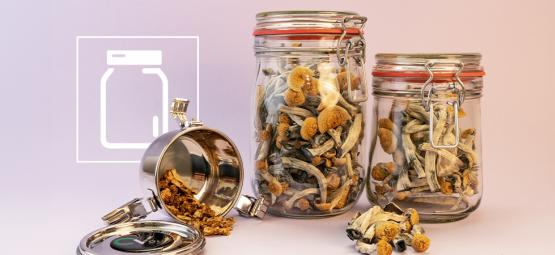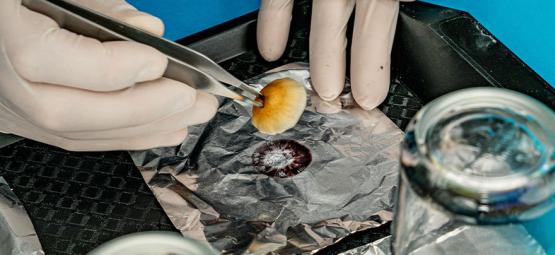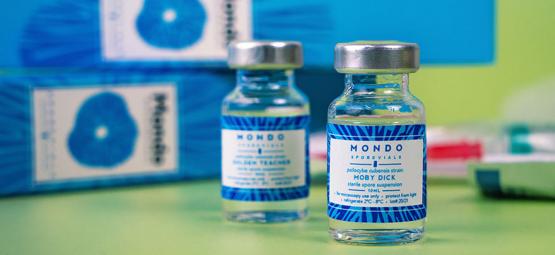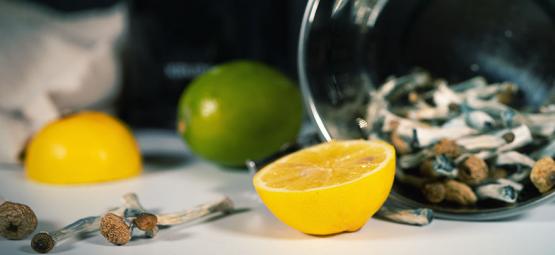How To Make A Magic Mushroom Spore Syringe
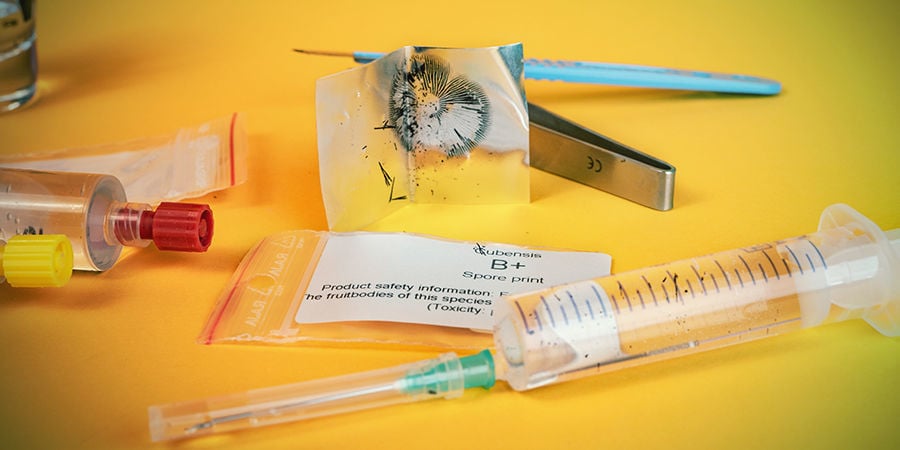
There are a couple of ways to inoculate a substrate to grow magic mushrooms. From ghostly liquid cultures to Petri dishes, it can be hard to decide which method is best when starting out. Using a spore syringe is one of the simplest and cleanest options—a perfect solution for the novice grower!
Growing your own magic mushrooms is a deeply rewarding process. It is also a very involved process with numerous steps, each of which must be done carefully and with precision. The very first of these is inoculation of the substrate, followed by germination of your mushroom spores. For first-time growers, the careful, hands-on methods required can be equal parts daunting and exciting. But, we’re here to help; let’s explore how to make your very first magic mushroom spore syringe.
What Is a Spore Syringe?
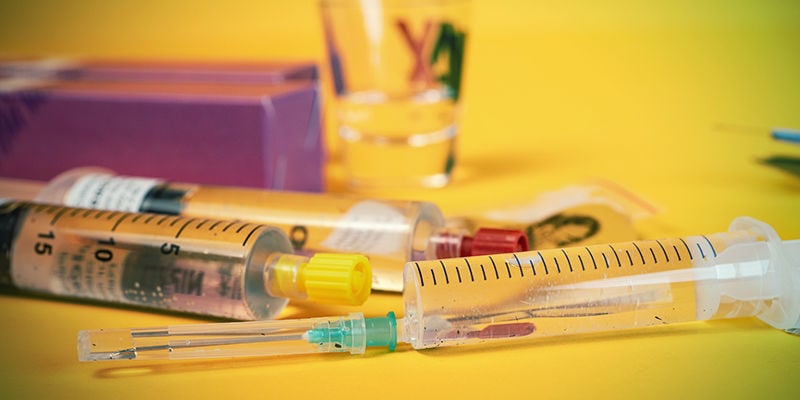
A spore syringe is an essential part of growing your own magic mushrooms—it is used to inoculate your chosen substrate. The minuscule spores floating about in the spore solution hold the genetic code to the (hopefully) ounces and ounces of magic mushrooms you can expect to grow. Mixing your spores into sterile water inside a syringe is one of the most effective, and easiest, germination techniques when growing mushrooms.
Why Use a Spore Syringe?
Using a spore syringe is about the easiest way to maintain cleanliness in your mushroom grow, especially if used alongside a flow hood. There are other methods of inoculation, such as liquid cultures, which will be covered later. Generally though, a spore syringe allows spores to be added directly to the substrate without a huge risk of contamination (when done properly).
If you’re a first-time grower, it’s hard to beat this method. Simple and reliable, it’s an easy process for the novice. Indeed, many seasoned cultivators continue to opt for this method.
How To Make a Spore Syringe
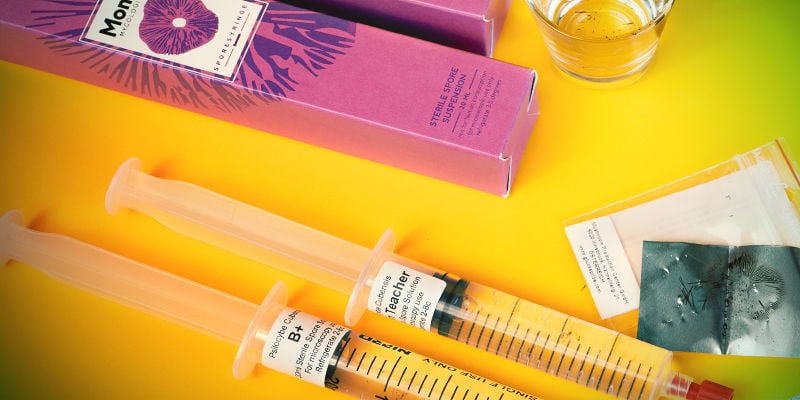
To make a spore syringe, you’ll first need to source some magic mushroom spores. These can be found online in the form of spore prints, or you can buy ready-made spore syringes.
To avoid the risk of contamination, prepare a clean environment with as little airflow as possible. It is recommended to do this in a still air box or with a laminar flow hood. Failing this, use a small room with surfaces which can be bleached first. Consider wearing gloves and a mask, too.
Although, be aware that this stage does not present the greatest risk of contamination, so there’s no need to go overboard. However, any extra care you take will pay off, as growing mushrooms is a long and fairly involved process, and there’s little worse than finding a cake covered in mould two months down the line!
All of the equipment listed below should be easily accessible, either online or in a shop. Moreover, it can be a fairly cheap setup, with the reward far outweighing the cost. And, besides the spores, none of it is suspect or controlled. Fortunately, in most countries, even spore prints from psilocybin mushrooms are not illegal.
Equipment for a Spore Syringe
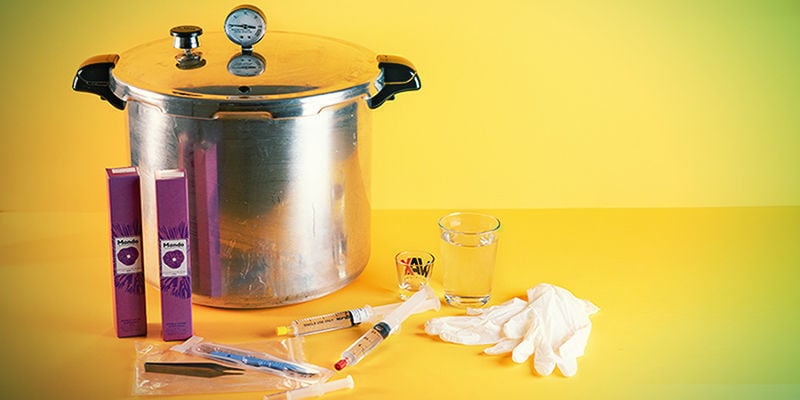
- Spore print
- Sterile syringe (10–20ml should be adequate)
- Sterile water
- Shot glass or small dish
- Pressure cooker
- Scalpel (optional: any hard, clean edge will suffice)
- Tweezers
- Gas hob or burner
- Ziplock bag
Spore Syringe Step-By-Step Directions
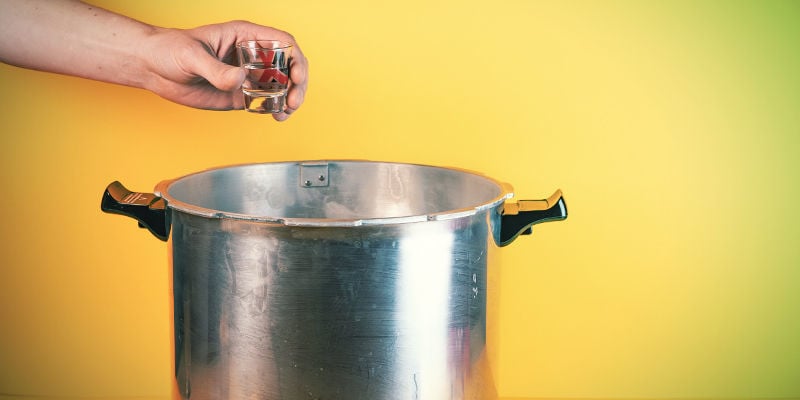
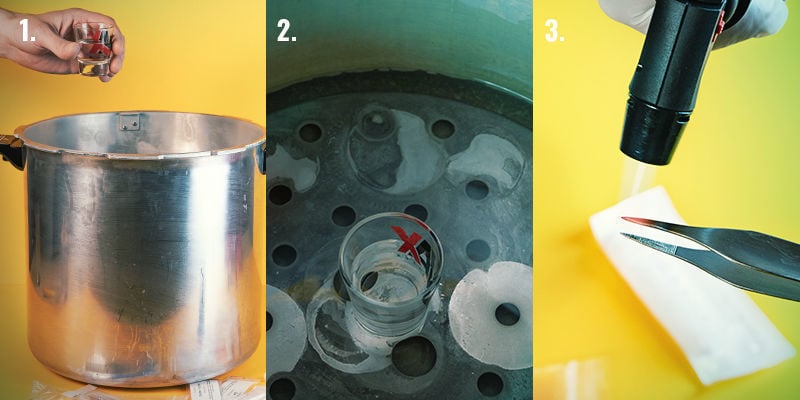
1. Start out by sterilising your water and shot glass/small dish. Place in your pressure cooker and heat until it reaches 15psi. Once you've reached pressure, lower the temperature and continue to cook for at least 30 minutes. This amount of time will ensure adequate sterilisation (if reusing syringes, they can be added in this stage too).
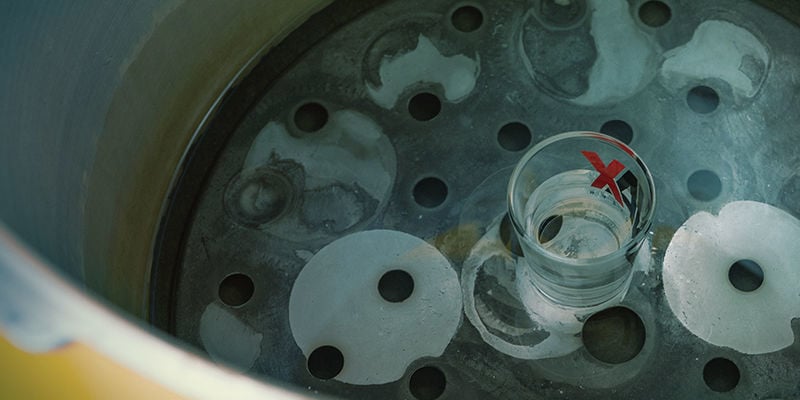
2. Turn off the heat completely after 30 minutes and allow the water to cool to room temperature. This stage is very important; if you proceed while the water is still hot, you run a huge risk of killing the spores. Your equipment can be as sterile as you'd like, but if you cook the spores it’s all pointless.
It should take a few hours to completely cool, but it’s safest to let it sit over night. Make sure you leave it sealed! If you open it before you are about to use the equipment, it will become contaminated again.
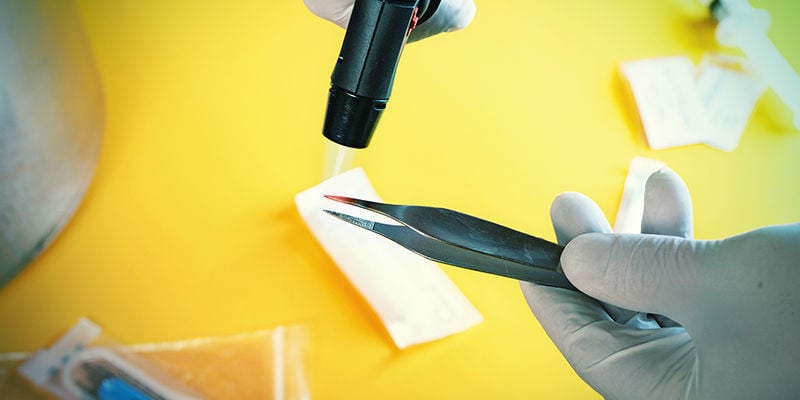
3. Now you are ready to make the spore syringes. Sterilise your tweezers and scalpel using a flame.
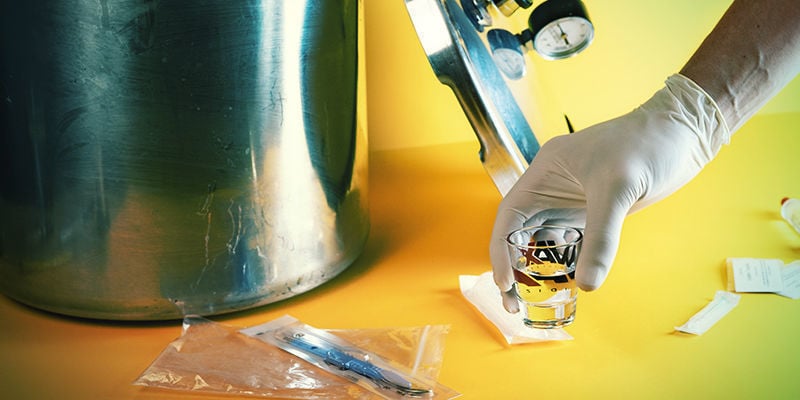
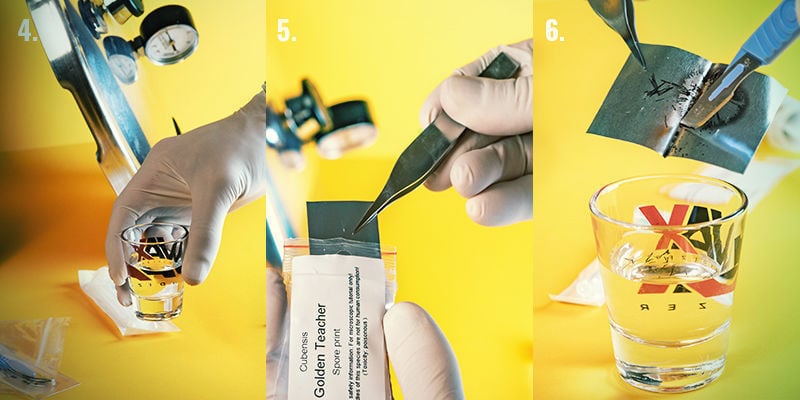
4. Remove the shot glass/small dish from the pressure cooker.
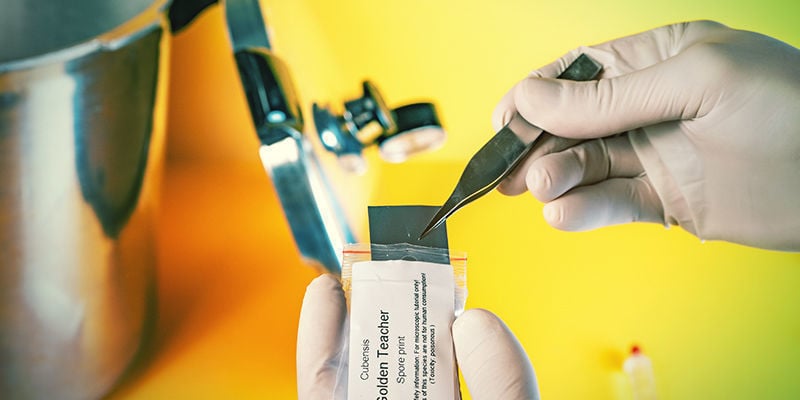
5. With your tweezers, take the spore print from its storage and hold it over the opening of the shot glass/small dish.
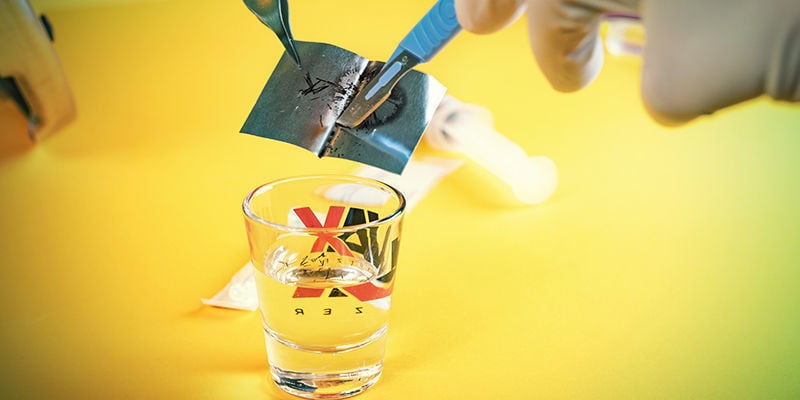
6. With scalpel in hand, carefully scrape some of the spores into the water.
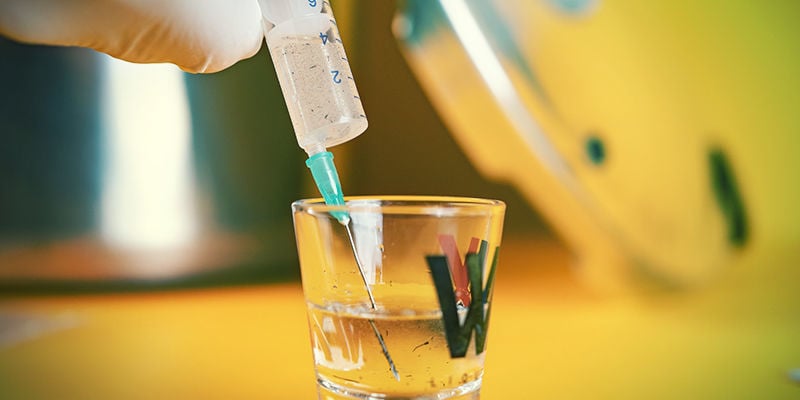
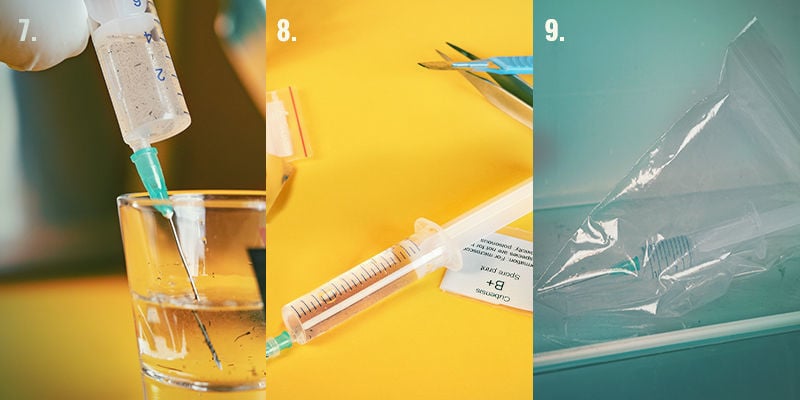
7. You should fill your syringes instantly—place the tip of your first syringe into the water and fill it up. It is a good idea to empty the syringe back into the shot glass and repeat this process a couple of times. This will ensure there is a good spread of spores throughout the water—do this every time you add more spores.
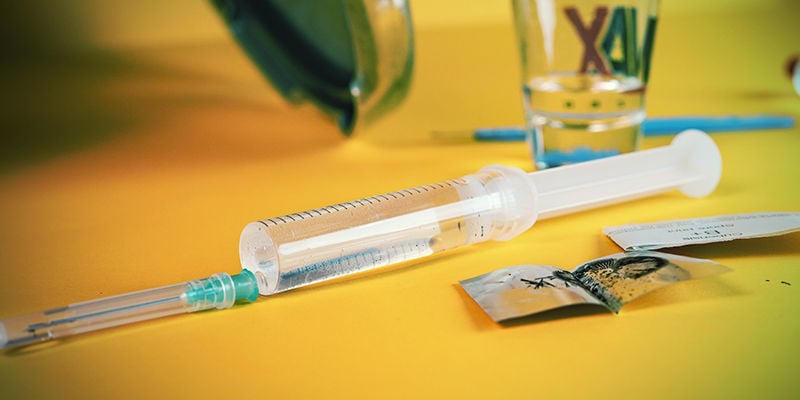
8. Now that you have a filled syringe, you need to leave it at room temperature for 2–3 days so the spores can fully hydrate.
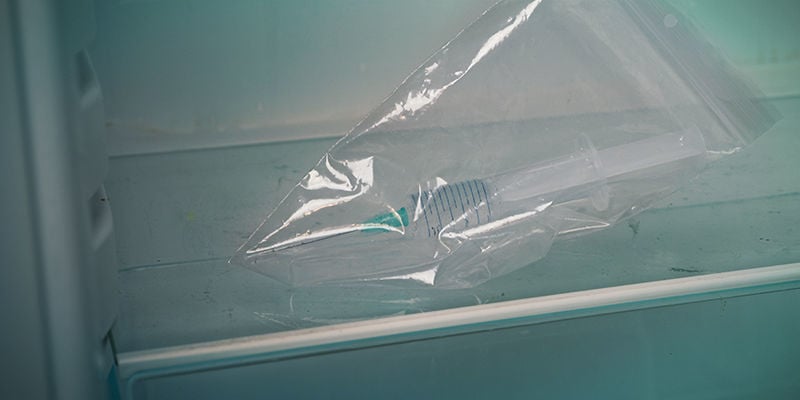
9. Once hydrated, you can store your spore syringes in an airtight ziplock bag in the fridge. They will remain viable for up to 12 months.
How To Use a Spore Syringe
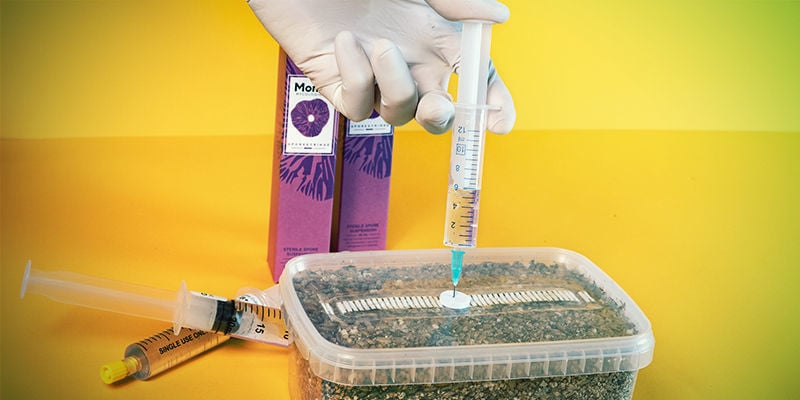
Using a spore syringe is fairly simple, so long as you exercise restraint. There are literally millions of spores in each syringe, so you shouldn’t need more than 3 millilitres per square litre of substrate. That’s about a drop or two.
If you’re inoculating a substrate in a jar, it’s most likely the jar will have holes punched through the lid, sealed with tape or a plug of some sort. Whatever the case, the process is the same. Pierce the microporous tape that should be covering these holes (or remove the plug) and squirt a little of the spore solution onto the substrate. How much depends on the size of the jars.
Once this is complete, place new microporous tape over the pierced strips and place the jars in a suitable warm and dark location. Hopefully, within a week you should begin to see mycelium colonising the places where you dropped the spore solution. It should look like little patches of cotton wool.
Over the following weeks, these patches should grow to envelop the entire jar. Do not do anything with it until it is fully colonised! Likewise, keep an eye on what else is growing in there to see if it's been contaminated.
How To Store a Spore Syringe
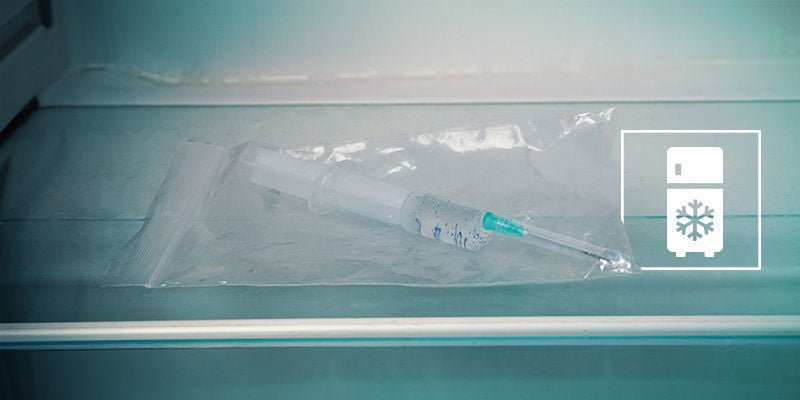
Stored properly, spore syringes can last up to 12 months by some accounts. Remember that the spores are living things, therefore inadequate storage will kill them.
Do Spore Syringes Need To Be Refrigerated?
Yes. Spore syringes should always be refrigerated at between 2°C and 8°C. They should also be stored in darkness, although this likely shouldn’t be a problem as they will be kept in a fridge.
Can Spore Syringes Be Frozen
No. Spores are cells that contain water. Therefore, freezing will destroy them.
Do Spore Syringes Go Bad?
Yes. If stored poorly, they can die. Likewise, they will naturally die in time too, although they are surprisingly resilient little things when stored well.
Can You Reuse a Spore Syringe?
Absolutely. So long as you sterilise the syringe properly, and it is not damaged, there is no reason one cannot be used many times. To sterilise a syringe, either fill it with sterilised boiling water or cook it in a pressure cooker. To sterilise the needle, use a flame.
Spore Syringes Versus Liquid Cultures
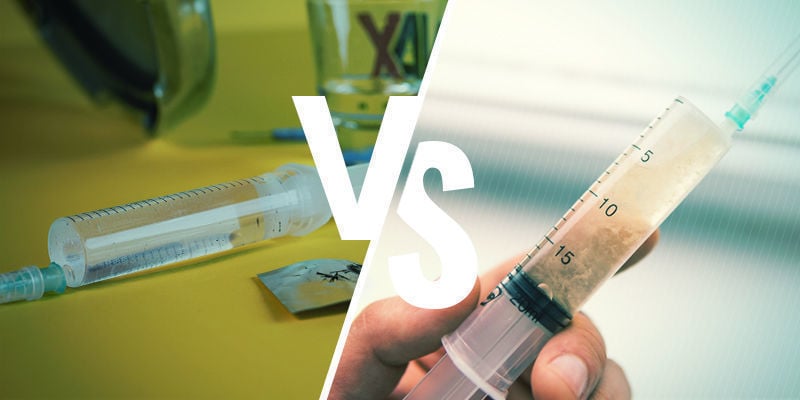
Liquid cultures are another popular way of inoculating substrates with mushroom spores. Essentially, the germination happens within a liquid substrate, and you’ll find the mycelium ethereally suspended. Liquid cultures happen in a nutrient-rich “broth” (sterile water enriched with sugars).
With liquid cultures, most believe it is important to isolate a single strain, otherwise you will lack consistency and control down the line, and the strains will compete with one another. Spore syringes, on the other hand, can be single or multispore.
Spore Syringe Versus Spore Prints in Agar
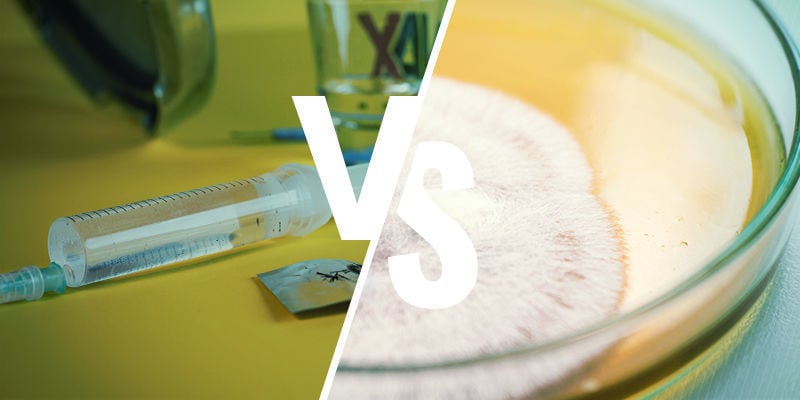
Another germination method is within an agar solution in a Petri dish. Agar is a sugar-rich compound in which spores can germinate and mycelium can grow. It too is a simple method, as you can drop spores from a spore print directly onto it.
However, if it is not done in a sealed air box or under a flow hood, there is a very high risk of contamination, as the Petri dish will be uncovered, allowing many other microbes onto its surface. The environment in which mycelium likes to grow is the same that many other organisms love!
Which method you choose is down to preference and ease. Spore syringes are the simplest way to go, and are advisable for first-time growers. Due to the simplicity and speed of the process, it’s just an easy method. However, the germination process within the substrate is slower than using a liquid culture.
Liquid cultures, while more difficult to make, do tend to yield better results. Basically, because the germination has happened and you already have mycelium, it colonises the substrate far faster and more aggressively than the spore syringe method. What this means is that you mitigate the risk of contamination, as the mycelium has a greater chance of being dominant. As spore syringes are slower to colonise, this allows a bigger window for competitive growth.
Where Can You Find Spore Syringes?
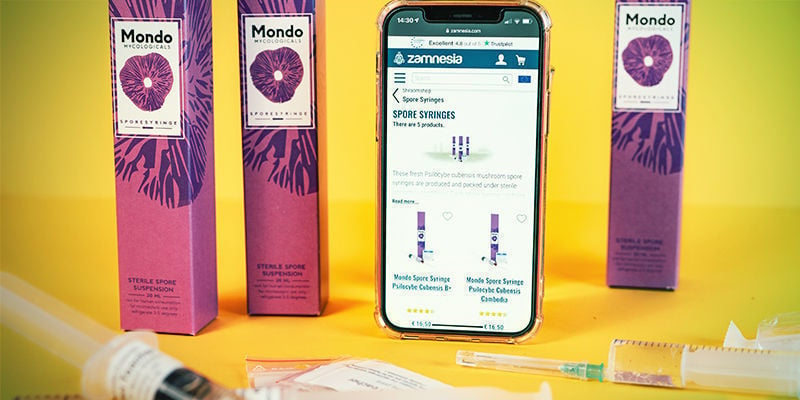
Both spore syringes and liquid cultures are available online. Although, it’s important to check how reputable the sources are and the laws in your country. In some nations, the mycelium of magic mushrooms is illegal, even where the spores aren’t.
But, if you’re interested in growing, it’s worth giving all methods a go yourself. When you harvest your first massive flushes some months later, you’ll look back fondly at the very first steps. Plus, you’ll already know how to immediately make new ones from your very own spores!
You might also like











 United States
United States

